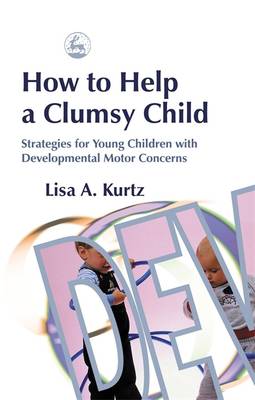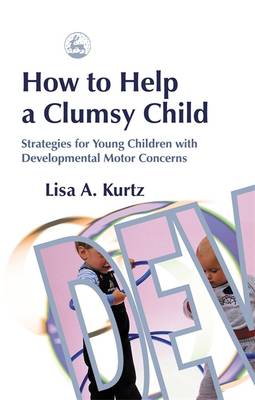
Je cadeautjes zeker op tijd in huis hebben voor de feestdagen? Kom langs in onze winkels en vind het perfecte geschenk!
- Afhalen na 1 uur in een winkel met voorraad
- Gratis thuislevering in België vanaf € 30
- Ruim aanbod met 7 miljoen producten
Je cadeautjes zeker op tijd in huis hebben voor de feestdagen? Kom langs in onze winkels en vind het perfecte geschenk!
- Afhalen na 1 uur in een winkel met voorraad
- Gratis thuislevering in België vanaf € 30
- Ruim aanbod met 7 miljoen producten
Zoeken
How to Help a Clumsy Child
Strategies for Young Children with Developmental Motor Concerns
Lisa A Kurtz
Paperback | Engels
€ 40,45
+ 80 punten
Omschrijving
'The book is user-friendly and includes clear diagrams in each section, along with tables to outline key points. I found these very useful and they are an easy reference/ reminder, for example, they include a normal development chart, what assessments are available and their main aims.' - National Association of Paediatric Occupational Therapists When a child has a developmental delay affecting motor coordination and development the ramifications are far reaching, from the daily tasks of dressing and brushing your teeth, to learning to write and participating in sports. How to Help a Clumsy Child is a practical resource manual and 'how to help' book for parents of, or professionals working with, young children with motor coordination developmental delays. It covers a range of topics, including recognizing normal and abnormal motor development, when and how to seek help, an overview of approaches used to help the clumsy child, and specific teaching strategies appropriate for both parents and professional caregivers. Rather than focusing upon one specific frame of reference, Lisa Kurtz offers a diverse range of ways to manage motor coordination and development problems, and also discusses the controversial nature of therapy for these children. Multiple tables and lists serve as quick reference guides and the three appendices include extensive further reading and an invaluable contacts list, making this an essential resource for anyone caring for, or working with, children with developmental motor concerns.
Specificaties
Betrokkenen
- Auteur(s):
- Uitgeverij:
Inhoud
- Aantal bladzijden:
- 180
- Taal:
- Engels
Eigenschappen
- Productcode (EAN):
- 9781843107545
- Verschijningsdatum:
- 1/01/2003
- Uitvoering:
- Paperback
- Formaat:
- Trade paperback (VS)
- Afmetingen:
- 162 mm x 215 mm
- Gewicht:
- 231 g

Alleen bij Standaard Boekhandel
+ 80 punten op je klantenkaart van Standaard Boekhandel
Beoordelingen
We publiceren alleen reviews die voldoen aan de voorwaarden voor reviews. Bekijk onze voorwaarden voor reviews.









